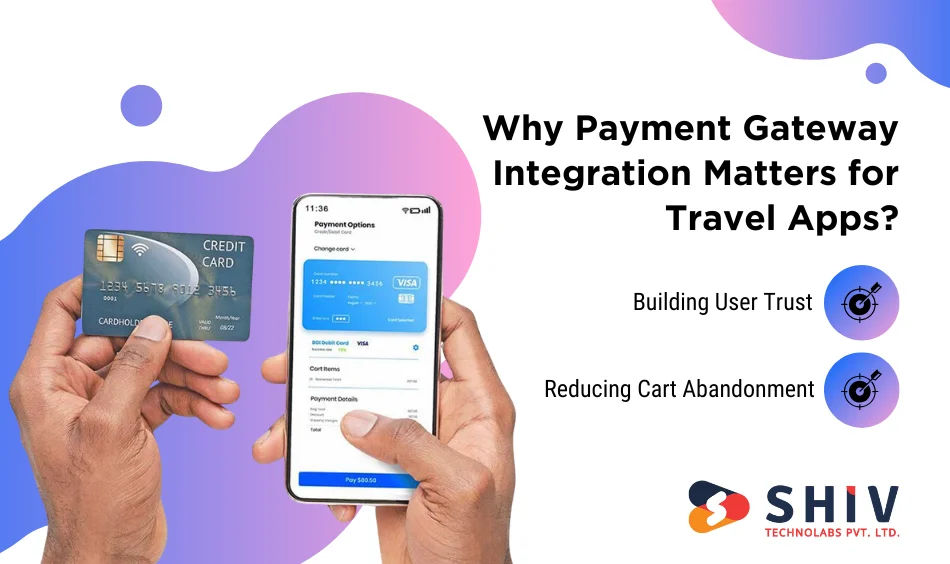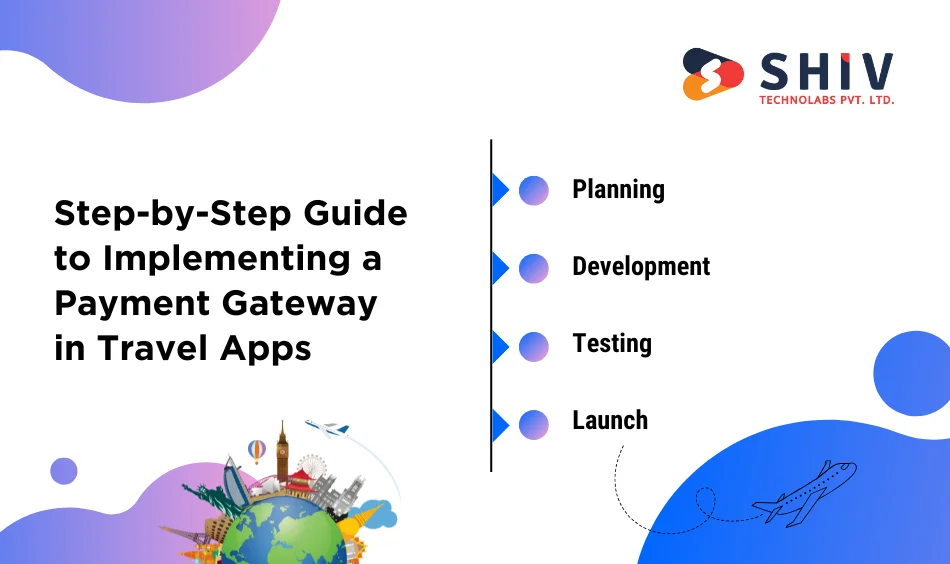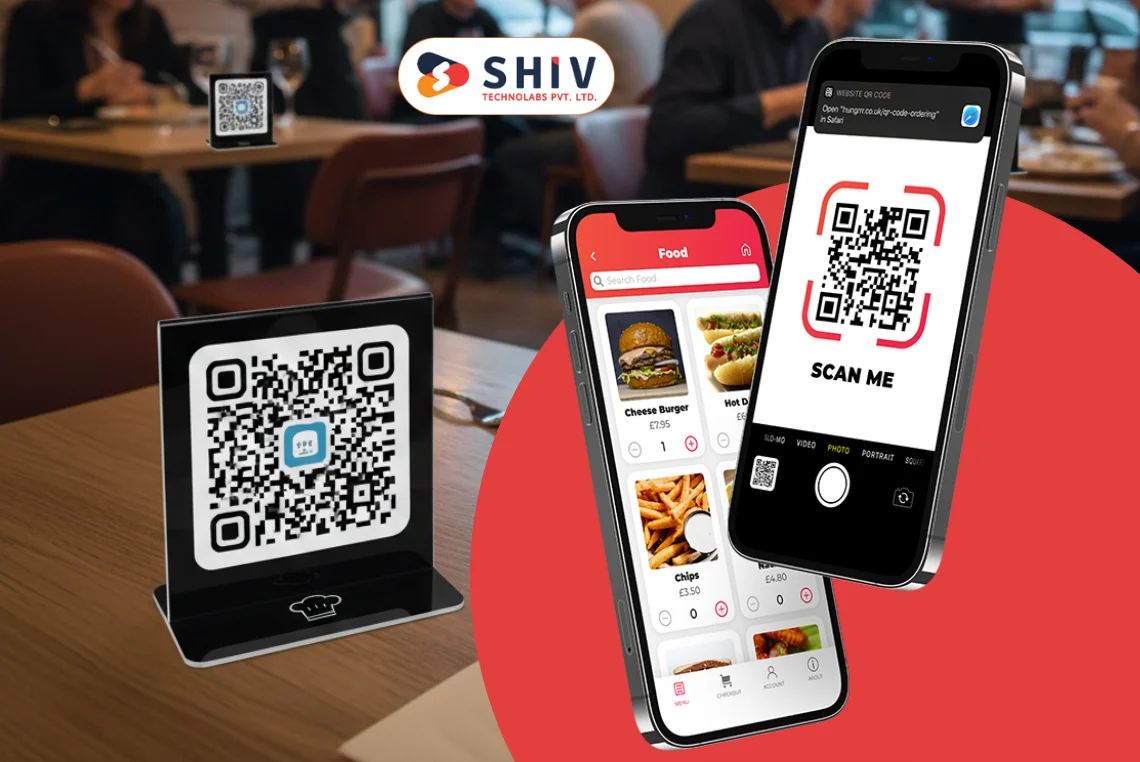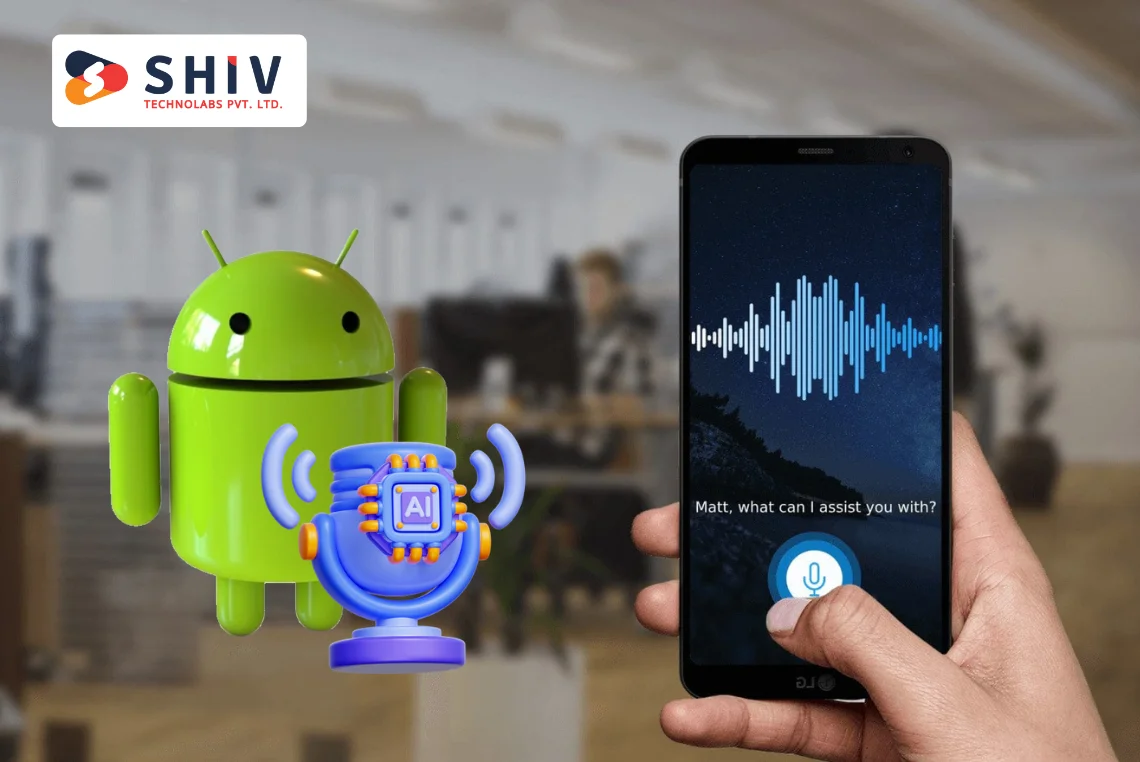Table of Contents
Payment gateway integration is a key part of any travel app. It enables users to make safe payments for their bookings. When developing a travel app, consider how individuals will pay for flights, hotel stays, and other services. A sound customer payment system will leave the customers happy and will support your business growth.
Travel apps need secure payment gateways to handle money safely. Users want to pay fast without worrying about their card details. A travel app development company knows how to set up these payment systems. They make sure everything works well and follows all the rules.
The right payment gateway enables your travel app to accept various payment types. This includes credit cards, debit cards, and digital wallets. With a good payment setup, your users can book trips from anywhere in the world. This makes your app stand out from others in the market.
Why Payment Gateway Integration Matters for Travel Apps?

Here are the crucial reasons for integrating a payment gateway:
Building User Trust
Trust is everything in travel apps. When people book expensive trips, they want to feel safe. A secure payment gateway for travel apps helps build this trust.
Key trust factors:
- Secure payment logos users recognize
- SSL certificates for safe data transfer
- PCI DSS compliance for card protection
- Clear refund and cancellation policies
The payment gateway market reached USD 37.0 billion in 2024, showing how important secure payments have become.
Reducing Cart Abandonment
Many users leave their bookings halfway through payment. This happens when payment systems are slow or confusing.
Common reasons users abandon bookings:
- Too many payment steps
- Slow loading pages
- Limited payment options
- Unclear pricing breakdown
- Security concerns
Effective travel app payment integration ensures a smooth and fast checkout process.
Must-Have Payment Gateway Features for Travel Booking Apps
Here are the key features of a payment gateway:
Payment Methods You Must Include
| Payment Type | Why It’s Important | User Preference |
|---|---|---|
| Credit Cards | Most trusted method | 68% of users |
| Debit Cards | Direct bank access | 45% of users |
| Digital Wallets | Quick one-tap payment | 52% of users |
| Bank Transfer | Lower fees | 23% of users |
| Buy Now Pay Later | Flexible payment | 31% of users |
Travel app revenue surpassed $2 billion globally in 2024, with apps offering multiple payment options performing better.
Security Features
Your payment gateway must protect user data. Here’s what you need:
- Data encryption during transfer
- Tokenization for stored card details
- Two-factor authentication
- Fraud detection systems
- Regular security audits
73% of travelers have encountered credit card acceptance issues when traveling, so choose gateways with high acceptance rates worldwide.
Multi-Currency Payment Setup for Travel app
Travel apps serve customers worldwide. Multi-currency payment in travel app helps users pay in their local money.
Benefits of multi-currency support:
- Users see prices in a familiar currency
- Reduces conversion confusion
- Increases booking completion rates
- Builds trust with international customers
- Competitive advantage over single-currency apps
Currency Implementation Overview
| Feature | Basic Setup | Advanced Setup |
|---|---|---|
| Currency Display | Show 3-5 major currencies | Show 50+ currencies |
| Exchange Rates | Update daily | Update real-time |
| User Choice | Auto-detect location | Manual currency selection |
| Pricing | Round to nearest dollar | Show exact conversion |
| Fees | Hidden conversion fees | Transparent fee structure |
The mobile travel booking market in 2024 is worth $228 billion, with most users expecting flexible payment options.
Step-by-Step Guide to Implementing a Payment Gateway in Travel Apps

Below are the easy processes for travel app payment gateway implementation:
Phase 1: Planning
Start by determining what you need before you begin building anything. Consider who will use your app and what they need.
Choose Your Target Markets
Pick which countries you want to serve first. Each place has different rules about the payments that you need to follow.
Research Local Payment Preferences
People in different places like to pay in different ways. Some countries prefer mobile wallets, while others remain loyal to credit cards. Find out what works best.
Select a Payment Gateway Provider
Look at companies like Stripe, Razorpay, and PayPal. Check what they charge, which countries they work in, and how easy their tools are to use.
Plan Security Requirements
Consider how you’ll keep customer data secure. You must follow strict guidelines for handling credit card information and protecting against fraud.
Phase 2: Development
Now your programmers will connect your app to the payment system you picked.
API Integration with Your App
Your developers will use the payment company’s instructions to link their system with yours. This allows money to be transferred between accounts when someone confirms their booking.
User Interface Design
Build pages where people can enter their payment details. Ensure these pages are easy to use on mobile devices and display that payments are secure.
Security Implementation
Add protection like data scrambling and safe storage. Never keep credit card numbers on your own computers – let the payment company handle that part.
Testing Across Devices
Ensure your payment system functions consistently across different phones and tablets. Test on both Apple and Android devices.
Phase 3: Testing
Before real customers start using your app, ensure everything works perfectly.
Test All Payment Methods
Try making the bookings with fake credit cards, digital wallets, and bank transfers. Ensure that each option processes payments correctly.
Check Different Currencies
If you serve multiple countries, test payments in different currencies. Confirm that currency conversions occur at the correct rates.
Verify Security Features
Run tests to make sure hackers can’t steal customer information. Verify that your fraud detection system identifies suspicious activity.
User Experience Testing
Watch real people try to make payments in your app. Check if they get confused or stuck anywhere and address those issues.
Phase 4: Launch
Once testing is complete, you can begin allowing customers to use your payment system for actual purchases.
Soft Launch with Limited Users
Grant payment access to only a few users initially. Watch how it performs and fix any surprise issues before more people start using it.
Monitor Payment Success Rates
Keep track of how many payments work versus how many fail. Quick action on problems keeps customers happy.
Gather User Feedback
Ask customers about their thoughts on your payment process. Determine if anything appears slow, confusing, or broken from their perspective.
Full Launch After Improvements
Once you’ve resolved the main issues and customers are satisfied, enable payments for all users of your app.
Common Integration Challenges
Below are common integration challenges in payment gateway integration for travel apps:
| Challenge | Problem | Solution |
|---|---|---|
| Slow Processing | Payments take too long | Choose faster gateway APIs |
| Failed Transactions | High failure rates | Implement retry mechanisms |
| Currency Issues | Wrong exchange rates | Use real-time rate services |
| Security Concerns | Data breaches | Follow PCI DSS standards |
| User Confusion | Complex checkout flow | Simplify payment steps |
Effective Payment Practices for Travel Booking Apps: Key Areas to Focus On
Below are the best practices for travel booking app payment:
Checkout Process Optimization
Make your payment process simple and clear. Users should complete bookings without confusion.
Check out best practices:
- Show progress indicators
- Break down all costs clearly
- Offer guest checkout option
- Save payment details securely
- Provide multiple payment methods
Error Handling Guidelines
When payments fail, help users fix the problem quickly.
Error handling checklist:
- Clear error messages in simple language
- Suggest alternative payment methods
- Show customer support contact
- Allow users to retry payment
- Save booking details during errors
Mobile Payment Optimization
Travel apps’ global revenue has tripled in size, exceeding 1.2 billion U.S. dollars in 2023. Most growth comes from mobile bookings.
Mobile optimization tips:
- Large, touch-friendly buttons
- Auto-fill payment forms
- Biometric authentication support
- Offline payment capability
- Fast loading payment pages
Security and Compliance
Below are possible security and compliance standards for a payment gateway:
Payment Security Standards
| Security Level | Requirements | Implementation |
|---|---|---|
| Basic | SSL encryption | HTTPS for all pages |
| Standard | PCI DSS compliance | Follow card industry rules |
| Advanced | Tokenization | Replace card numbers with tokens |
| Premium | AI fraud detection | Monitor suspicious activities |
| Enterprise | Multi-layer security | Combine all security methods |
Compliance Checklist
Legal requirements:
- PCI DSS certification
- GDPR compliance for EU users
- Local payment regulations
- Data protection laws
- Consumer protection rules
Future Trends in Travel App Payments
Below are empowering trends in Travel app payments that shape the future:
Emerging Payment Technologies
Trending payment methods:
- Contactless NFC payments
- QR code payments
- Voice-activated payments
- Cryptocurrency options
- Biometric authentication
AI and Machine Learning
Innovative payment systems use AI to improve user experience.
AI applications:
- Fraud detection and prevention
- Personalized payment method suggestions
- Dynamic pricing optimization
- User behavior analysis
- Automatic currency selection
How to Measure Payment Success?
Here are easy ways to measure payment success:
Key Performance Indicators
| Metric | Good Performance | Poor Performance |
|---|---|---|
| Payment Success Rate | Above 95% | Below 90% |
| Checkout Completion | Above 80% | Below 70% |
| Average Payment Time | Under 30 seconds | Over 60 seconds |
| User Satisfaction | Above 4.5/5 | Below 4.0/5 |
| Support Tickets | Less than 2% | More than 5% |
Tracking and Analytics
Important metrics to monitor:
- Payment method preferences
- Failed transaction reasons
- User drop-off points
- Revenue per payment method
- International transaction success
Conclusion
A good payment system is more than just a feature; it helps build trust and gives users a smooth booking experience. Today’s travelers want to pay quickly, safely, and in the way that suits them best, whether it’s with a card, digital wallet, or their local currency. For travel startups, setting up the right payment gateway is important for growing the business and reaching more users around the world. It’s important to focus on things like simple design, strong security, and support for different currencies.
At Shiv Technolabs, we help travel startups create easy and secure payment systems that work well in different countries. Since the payment step is the final part before a user books their trip, making it simple and safe can help turn first-time users into repeat customers.

























